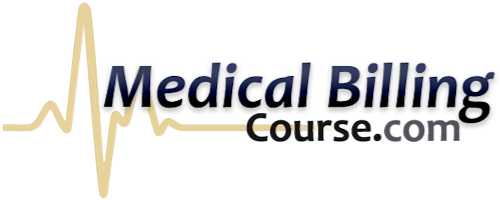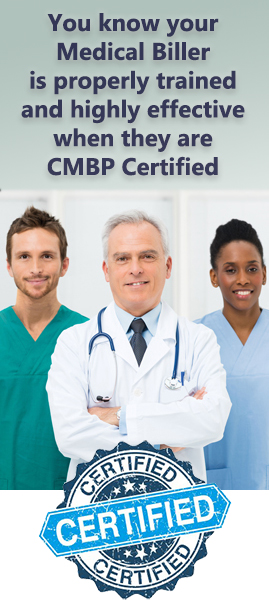- 08/26/2025
- Posted by: Medical Billing Course
- Categories: Medical Billing, Medical Billing Career, Medical Billing Procedures

Mastering Medical Insurance Claim Procedures for Success: A Complete Guide to Efficient Billing and Career Growth
In the world of healthcare, mastering medical insurance claim procedures is your ticket to ensuring timely reimbursements and avoiding revenue hiccups. This guide is your roadmap to conquering every step—from patient registration to advanced denial management—while carving out a successful career or business in medical billing. Dive into essential workflows, certification paths, business startup strategies, HIPAA compliance basics, revenue cycle management best practices, common challenges, and emerging trends. With the Medical Billing Course as your training partner, transform your professional journey and achieve consistent claim success.
What Are the Essential Steps in Medical Insurance Claim Procedures?
Medical insurance claim procedures are a series of interconnected actions designed to submit, process, and secure payment for healthcare services. Each stage is crucial for optimizing revenue, ensuring compliance, and minimizing denials through precise data handling and systematic workflows. Understanding these steps is the foundation for advanced billing proficiency and long-term career growth.
How Does Patient Registration and Eligibility Verification Impact Claims?
Accurate patient registration and eligibility verification are the first lines of defense against claim rejections due to ineligible insurance or outdated subscriber information. Medical billers gather demographics, plan identifiers, and pre-authorization requirements, then validate them against payer databases. This proactive approach reduces front-end denials and speeds up reimbursement.
Accurate eligibility checks pave the way for precise medical coding.
What Is the Role of Medical Coding in Claims Processing?
Medical coding translates clinical documentation into standardized CPT, ICD-10, and HCPCS codes, which communicate services and diagnoses to payers. Proper code selection ensures reimbursement aligns with provider documentation and medical necessity guidelines. Inaccurate coding can lead to denials for reasons like unbundling or mismatched procedure-diagnosis pairs.
Mastering coding precision is key to reliable claim submission.
How Are Claims Submitted and Adjudicated by Insurance Companies?
Claims are submitted electronically via ANSI X12 837 or on paper using CMS-1500 forms, then routed to payer adjudication systems. Adjudication applies benefit rules, coverage limitations, and coordination-of-benefits logic to approve, adjust, or deny charges. Real-time edits flag errors before final processing, while remittance advice (835 file) conveys payment details.
Efficient submission and adjudication complete the payer review process.
What Happens During Payment Posting and Reconciliation?
Payment posting records payer remittances against billed amounts, updating patient ledgers and aging reports. Reconciliation compares expected payments to posted amounts, identifies short-pays, and categorizes denials by reason. This financial control ensures accurate accounts receivable tracking and triggers follow-up for underpayments.
Robust reconciliation processes drive transparency and revenue integrity.
How Can Denial Management Improve Claim Success Rates?
Effective denial management identifies root causes, categorizes denial reasons, and launches targeted appeals within payer timeframes. By analyzing denial patterns, billers implement corrective actions—such as code edits or medical necessity documentation—and track appeal outcomes. Over time, this continuous improvement reduces denial ratios and shortens days in accounts receivable.
A strong denial management protocol closes gaps in revenue cycle performance.
How Can You Become a Certified Medical Biller?
Certification validates expertise in medical billing, signaling to employers and clients that you possess industry-recognized credentials. Earning a credential enhances job prospects, boosts earning potential, and underpins entrepreneurial success in a competitive marketplace.
What Are the Benefits of Our Medical Billing Certification?

Our certification program is designed to equip you with the specialized skills needed for success in medical billing. It reflects distinct skill sets and career pathways, empowering you to target roles in hospitals, physician practices, or independent billing services.
How Does Our Certification Prepare You for Medical Claims Mastery?
Our certification exams test core competencies—medical terminology, payer rules, claims workflows—through scenario-based questions. Preparation builds practical skills in claim form completion, error resolution, and compliance with industry standards. This rigorous training ensures that certified professionals navigate real-world billing challenges with confidence.
Exam readiness fosters a comprehensive understanding of end-to-end claim processes.
What Career Paths and Salary Expectations Follow Our Certification?
Certified billers pursue roles such as billing coordinator, revenue integrity analyst, or consultant. According to industry data, certified professionals can earn a median salary of $55,000–$65,000 annually, with advanced positions exceeding $80,000. Career growth includes supervisory or managerial tracks in healthcare revenue cycle departments.
Certification opens doors to diverse positions and higher remuneration.
How Does Our Certification Support Starting a Medical Billing Business?
Credentialed expertise builds credibility when marketing services to healthcare providers. Certification signals adherence to best practices in claim accuracy and compliance, setting your business apart. Combining our certification with specialized training—such as the Medical Billing Course Program – Part 2 advanced modules—equips you to offer comprehensive billing solutions and earn client trust.
Solid credentials lay the groundwork for successful medical billing entrepreneurship.
How Do You Start and Grow a Successful Medical Billing Business?

Launching a medical billing business requires a clear plan, the right technology, targeted marketing, and strict adherence to legal standards. With strategic planning and industry know-how, you can transform billing expertise into a profitable enterprise.
What Are the Key Elements of a Medical Billing Business Plan?
A robust business plan defines target markets, service offerings, pricing models, operational workflows, and financial projections. Elements include:
- Executive Summary outlining mission and value proposition.
- Market Analysis identifying niche opportunities (e.g., primary care, telehealth).
- Service Portfolio detailing coding, claim submission, denial management, and reporting.
- Marketing Strategy describing outreach channels and referral partnerships.
- Financial Plan projecting startup costs, revenue forecasts, and break-even analysis.
A comprehensive plan guides disciplined growth and resource allocation.
How to Choose the Right Medical Billing Software for Your Business?
Selecting software hinges on features, scalability, and integration capabilities. Evaluate:
- Claims Automation for batch submission and real-time edits.
- Reporting Dashboards monitoring key metrics like denial rates and days outstanding.
- EHR Integration to exchange patient data securely.
- User Access Controls for HIPAA compliance.
- Support and Training to ensure smooth adoption.
Prioritizing these criteria ensures operational efficiency and client satisfaction.
What Strategies Help Acquire and Retain Medical Billing Clients?
Effective client acquisition blends niche positioning with relationship building. Strategies include:
- Networking with local practices and medical associations.
- Offering free billing audits to demonstrate value.
- Developing referral incentives for satisfied clients.
- Providing transparent performance reports highlighting revenue gains.
Delivering measurable results fosters long-term retention and word-of-mouth referrals.
How Do Legal and Regulatory Compliance Requirements Affect Your Business?
Compliance with HIPAA rules, state licensing, business registration, and payer contracts safeguards patient privacy and business integrity. Establish policies for data security, breach response, employee training, and audit trails. Incorporating the Medical Billing Course Program – HIPAA Compliance ensures your operations adhere to federal standards and client expectations.
Adhering to regulations minimizes risk and strengthens your professional reputation.
What Is HIPAA Compliance and Why Is It Critical in Medical Billing?
HIPAA compliance governs how healthcare businesses protect patient health information (PHI) during billing and claims processing. Understanding core rules prevents costly breaches, maintains trust, and ensures legal reimbursement practices.
HIPAA Compliance and Data Security
HIPAA regulations are crucial for protecting patient health information (PHI) during billing and claims processing. These regulations establish standards for the privacy and security of PHI, ensuring that healthcare providers and billing services handle sensitive patient data responsibly.
– U.S. Department of Health & Human Services, HIPAA (2025)
This citation validates the importance of HIPAA compliance in medical billing, as highlighted in the article.
What Are the Core HIPAA Privacy and Security Rules?
The Privacy Rule establishes patient rights over PHI use and disclosure. The Security Rule mandates administrative, physical, and technical safeguards for electronic PHI. Key provisions include:
- Access Controls limit system entry to authorized users.
- Audit Controls logging data access and modifications.
- Encryption protects data at rest and in transit.
- Breach Notification requires timely reports of unauthorized disclosures.
How Does HIPAA Protect Patient Health Information (PHI)?
HIPAA mandates that PHI be used solely for treatment, payment, and healthcare operations. Covered entities implement:
- Minimum Necessary Standard to limit data exposure.
- Business Associate Agreements with vendors handling PHI.
- Privacy Policies informing patients of their rights.
What Are the Steps for Conducting HIPAA Compliance Audits?
A structured audit program includes:
- Risk Assessment to identify vulnerabilities in data handling systems.
- Policy Review evaluating written procedures and staff compliance.
- Technical Testing verifying encryption, access logs, and firewall settings.
- Employee Interviews confirming awareness of HIPAA requirements.
- Reporting and Remediation, documenting findings and implementing corrective actions.
How Does HIPAA Impact the Medical Claims Submission Process?
HIPAA influences claim submissions through secure EDI standards (ANSI X12) and mandated encryption of PHI-laden transactions. Claims clearinghouses implement electronic safeguards to protect subscriber details. Ensuring HIPAA-approved transmission protocols prevents data breaches and supports uninterrupted revenue flow.
Compliance with HIPAA is integral to every electronic claim exchange.
Master Medical Insurance Claim Procedures for Efficient Billing
Revenue Cycle Management (RCM) integrates clinical, administrative, and financial processes to optimize healthcare cash flow. By managing each stage—from appointment scheduling to final payment—providers sustain fiscal health and focus on patient care.
What Are the Key Stages of Revenue Cycle Management?
How Do Key Performance Indicators (KPIs) Measure RCM Success?
Monitoring KPIs provides actionable insights:
- Days in Accounts Receivable (AR) tracks average collection times.
- Clean Claim Rate measures the percentage of error-free submissions.
- Denial Rate quantifies claims requiring appeals.
- Net Collection Rate reflects actual revenue captured.
Regular KPI analysis drives continuous process improvement.
How Is Automation and AI Transforming Revenue Cycle Management?
Automation and robotic process automation (RPA) streamline repetitive tasks such as eligibility verification and claim scrubbing. AI-powered analytics predict denial risks, optimize coding suggestions, and accelerate payment posting. These technologies reduce manual errors and free staff to focus on complex revenue strategies.
Integrating smart workflows elevates billing efficiency and accuracy.
What Financial Benefits Result from Optimized RCM Practices?
Effective RCM delivers:
- Faster cash flow through timely claim submission.
- Reduced administrative costs by minimizing manual interventions.
- Higher revenue capture via improved denial recovery.
- Enhanced compliance and audit readiness.
Optimized cycles support sustainable financial performance.
What Are Common Challenges in Medical Insurance Claim Procedures and How Can You Overcome Them?
Complex payer rules, inconsistent documentation, and evolving regulations can stall claims and drain revenue. Addressing root causes with targeted solutions restores process reliability and boosts reimbursements.
What Are the Most Frequent Causes of Claim Denials?
Denials often stem from:
- Coding Errors, such as unbundling or mismatched codes.
- Lack of Medical Necessity Documentation failing payer criteria.
- Expired or Incorrect Eligibility Information at submission.
- Timely Filing Limit Exceeded due to administrative delays.
How Can Effective Denial Management Reduce Revenue Loss?
A proactive denial management program includes:
- Denial Categorization by reason code.
- Root Cause Analysis to uncover systemic issues.
- Appeals Workflow with templated documentation.
- Performance Tracking to measure appeal success rates.
Streamlining these steps recovers revenue and prevents recurrence.
What Role Does Accurate Medical Coding Play in Preventing Denials?
Precise coding ensures that claims align with documented services and payer rules. Continuous education on code updates, regular coding audits, and cross-checks against medical records minimizes errors. Coding accuracy directly reduces denials and supports faster reimbursements.
Coding precision underpins every successful claim submission.
How Can Medical Billing Software Help Minimize Errors and Delays?
Advanced billing platforms offer:
- Real-time Edits flagging code mismatches and missing data.
- Automated Eligibility Verification prior to claim generation.
- Denial Alerts routing problematic claims for quick correction.
- Dashboard Analytics highlighting bottlenecks in the workflow.
Leveraging software capabilities streamlines processes and elevates cash flow.
How Do Industry Trends and Future Developments Affect Medical Insurance Claim Procedures?
Emerging technologies, care models, and market shifts redefine billing workflows. Staying ahead of these trends positions professionals and businesses for sustained success in an evolving healthcare landscape.
How Is AI and Robotic Process Automation (RPA) Changing Medical Billing?
AI algorithms analyze claim data to predict denial risks, recommend optimal codes, and automate appeals. RPA handles repetitive tasks—such as eligibility checks and payment postings—with high accuracy. Together, they reduce manual workload by up to 50 percent and accelerate claim cycles.
What Impact Does Telehealth Expansion Have on Claims Processing?
Telehealth services introduce new billing codes, place-of-service modifiers, and cross-state licensing considerations. Billers must adapt workflows to capture virtual visit details, ensure compliant documentation, and verify payer telehealth policies. Mastery of telehealth billing safeguards collections in digital care environments.
How Are Value-Based Care Models Influencing Revenue Cycle Management?
Value-based care ties reimbursement to quality metrics and patient outcomes rather than volume. Claim procedures now incorporate quality measure reporting, risk adjustment codes, and performance-based incentives. Revenue cycle teams shift focus to data integration and compliance with value-based contracts.
What Is the Projected Job Growth and Market Outlook for Medical Billing Professionals?
The medical billing and coding profession is projected to grow 7 percent through 2031, outpacing average occupations. Industry revenues—driven by outsourcing and technology adoption—are forecast to nearly double by 2032. Skilled professionals and entrepreneurs will find abundant opportunities in remote and on-site roles.
Medical Billing and Coding Job Outlook
The medical billing and coding profession is projected to grow, indicating a strong demand for skilled professionals. This growth is driven by factors such as an aging population and the increasing complexity of healthcare billing processes, which require specialized expertise.
U.S. Bureau of Labor Statistics, Medical Records and Health Information Technicians (2025)
This citation supports the article’s claim about the projected job growth for medical billing professionals.
Mastering medical insurance claim procedures empowers you to deliver error-free submissions, secure optimal reimbursements, and build a fulfilling career or business. By following structured workflows, earning recognized certifications, leveraging technology, and adhering to regulatory standards, you position yourself for lasting success. Explore our comprehensive programs and take the next step toward becoming a certified medical biller at Medical Billing Course today.

